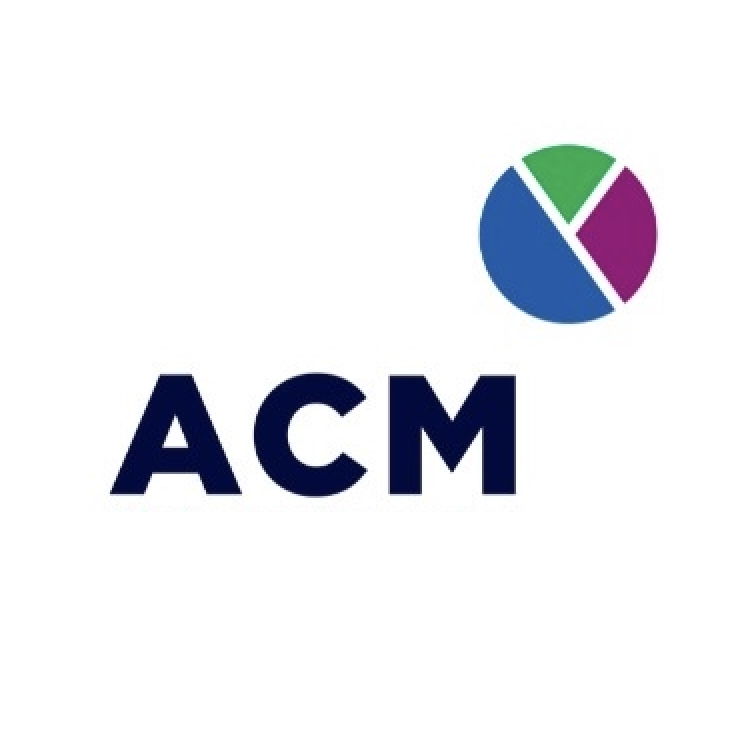
Marketing Strategy: Analysis and Tailored Offer
Are you struggling to convert prospects despite repeated marketing efforts? A well-designed marketing strategy can transform your business approach by aligning your sales objectives with market analysis and adapting to meet demand. Discover how to develop a structured marketing plan tailored to your industry, incorporating the latest digital marketing trends to maximize your impact.
Contents
1- The fundamentals of marketing strategy for your business
2- Key steps to developing a successful marketing strategy
The Fundamentals of Marketing Strategy for Your Business
Definition and Importance of a Marketing Strategy
A marketing strategy is a structured action plan that enables a business to attract its target customers. It aligns the offer with market expectations to maximize commercial impact.
The marketing strategy is part of the company’s overall direction. It positions the product or service against the competition by analyzing purchasing behavior. By observing customer expectations, it adapts the offer to meet market needs. It guides marketing decisions to align resources with sales goals while optimizing the use of communication channels.
Objectives of an Effective Marketing Strategy
A marketing strategy aims to increase brand visibility, retain existing customers, and attract new prospects. It drives sales by targeting relevant market segments and optimizing communication.
| Company Size/Sector | Main Marketing Objectives | Success Indicators |
|---|---|---|
| Startups | Customer and user acquisition, brand awareness growth | 100 product sales in the first month, increased reach of social media posts |
| Small and Medium Enterprises (SMEs) | Brand awareness growth, new customer acquisition | 30% increase in web traffic over 6 months, 15% improvement in conversion rate |
| Large Enterprises | New market development, brand image enhancement, customer loyalty | 10% market penetration in 12 months, 20% increase in customer retention rate |
| Consulting Sector | New contract generation, strengthening online presence | 10 new contracts per quarter, 50% increase in organic blog traffic |
| E-commerce Sector | Conversion rate optimization on the online store | 10% improvement in conversion rate in 3 months |
| Technology Sector | Improved SEO ranking and brand awareness | Top 3 Google ranking for 5 strategic keywords in 6 months |
| Training Sector | Establish brand authority and audience engagement | 10 educational webinars per year, 25% increase in newsletter subscriptions |
| Digital Marketing Agencies | Revenue generation through contracts, client acquisition via targeted campaigns | 20% quarterly revenue growth, 30% positive ROI on ad campaigns |
KPIs measure the effectiveness of marketing actions. Metrics such as conversion rate, customer acquisition cost, and return on investment are tracked. These indicators help adjust the strategy, optimize spending, and evaluate the achievement of business goals.
Key Steps to Developing a Successful Marketing Strategy
Market Analysis and Competitor Research
Market analysis explores trends, opportunities, and the size of the target market. It helps you understand consumer needs, identify priority segments, and address specific expectations.
Competitor research identifies your direct and indirect rivals. It assesses their strengths and weaknesses to help you build a competitive advantage. You identify market gaps to fill and opportunities to capitalize on.
Defining the Target Audience and Positioning
Defining your target audience refines your offer and optimizes communication. Marketing personas translate your customer segments’ expectations into precise profiles for a personalized approach.
- Competitive analysis to identify strengths/weaknesses and establish a unique competitive advantage
- Unique value proposition highlighting differentiating features supported by tangible proof (testimonials, case studies)
- Market segmentation to personalize communication and meet each customer group’s specific needs
- Engaging storytelling to create an emotional connection and boost loyalty through authentic, aligned values
Positioning determines your place in the consumer’s mind. It reflects your values, strengths, and differentiation. Precise positioning guides operational actions and reinforces your brand’s consistency.

Different Types of Marketing Strategies to Consider
Traditional Strategies (Porter and Marketing Mix)
Porter’s strategies include cost leadership, differentiation, and focus. These approaches help structure your marketing strategy to create a sustainable competitive advantage in your industry.
| 4Ps of the Marketing Mix | 7Ps of the Marketing Mix |
|---|---|
| Product | Product |
| Price | Price |
| Place (Distribution) | Place (Distribution) |
| Promotion | Promotion |
| People | |
| Process | |
| Physical Evidence |
The marketing mix organizes your offer around the 4Ps (Product, Price, Place, Promotion). For an e-commerce business, product, pricing, distribution, and promotion are adapted to your target audience’s expectations. The price reflects perceived value, distribution optimizes access, and promotion captures your market’s attention.
Digital Marketing Strategies
Digital marketing relies on SEO, social media, and online advertising campaigns to enhance your online presence and effectively engage with your target audience.
- Artificial intelligence to personalize the customer experience
- Influencer marketing through digital partners
- Customized video content for social platforms
- Mobile and voice search optimization
Inbound marketing, social media marketing, and influencer marketing attract prospects by creating valuable content that resonates with them. Social media marketing engages your audience across platforms. Influencer marketing leverages online experts to strengthen your digital brand awareness.
Niche and Differentiation Strategies
A niche strategy targets a specific segment of the market with a tailored product or service offering. It is ideal for businesses seeking to dominate a particular niche with specialized expertise.
Differentiation through product, service, or brand image sets your offer apart. It creates a lasting advantage by making your business essential to your target market. This approach boosts customer loyalty and justifies premium pricing.
Implementing Your Marketing Strategy
Creating the Operational Marketing Plan
Your operational marketing plan turns your strategy into concrete actions. It includes detailed planning, resource allocation, and the setting of performance indicators to ensure that goals are met.
Organize your marketing actions with a content calendar and collaborative tools. Prioritize tasks based on their impact on sales goals. Human and technical resources should be aligned with the key phases of your marketing roadmap.
Selecting the Right Communication Channels
Channel selection depends on your audience, goals, and budget. Social media reaches younger demographics, while TV advertising targets a broader audience.
An omnichannel strategy integrates both digital and physical channels to ensure a seamless customer experience. According to Gartner, customers use an average of 4 channels during their purchase journey, highlighting the importance of a consistent presence across all touchpoints.
Allocating Resources and Budget
Allocate your marketing budget based on the most effective levers. Digital channels, such as SEA (Search Engine Advertising) and social media, offer measurable ROI and high flexibility for adjustments.
Assess your internal skill needs to execute your marketing plan. Complement them with external experts for complex or emerging topics. Your marketing team can include data analysts, content creators, and performance specialists.
Measuring and Optimizing Performance
Performance indicators measure the effectiveness of your marketing strategy. Real-time tracking enables ongoing adjustments to optimize commercial outcomes.
Explore an example dashboard of the Top 10 KPIs for SMEs to visualize your marketing performance. Our marketing and sales consulting services help you define and analyze your key success metrics.
Your marketing strategy relies on three pillars: precise market analysis, SMART objectives, and digital implementation. Convert your insights into tangible actions now to effectively attract your target audience. Ready to convert your strategy into tangible success? Growth starts here.

FAQ
What are the five types of marketing?
There are several types of marketing, each with a specific goal. Content marketing focuses on creating valuable content to attract and engage your target audience. In contrast, social media marketing focuses on engaging with your audience on platforms like Facebook and Instagram.
Search engine marketing (SEM) aims to enhance website visibility through online search results. Email marketing helps nurture leads and build customer loyalty. Finally, contextual marketing delivers personalized ads based on users’ online behavior.
What are the seven pillars of marketing?
The 7 Ps of marketing is a model that breaks down marketing into seven key elements. First is the Product, which must solve a problem or meet a need. Then, Price, which should reflect perceived value. Promotion describes the product and uses the correct language to connect with the audience. Place (Distribution) determines where to reach customers.
People ensure that the exemplary service and sales teams are. Process defines and documents the delivery methods. Finally, Physical Evidence refers to the tangible element the customer receives, reinforcing the brand’s promise.
What are the 5 Ps in marketing?
The 5 Ps of marketing, also known as the marketing mix, are key elements for strategically positioning a business. Product refers to the goods and services offered. Price is the pricing strategy. Promotion encompasses all activities designed to raise awareness of the company.
Place (Distribution) is where the product is sold. People represent the employees and how they interact with customers, especially in terms of customer service.
What are Coca-Cola’s 4 Ps?
The 4 Ps of Coca-Cola’s marketing mix are Product, Price, Place (Distribution), and Promotion. Coca-Cola offers a wide range of beverages. The company continually adapts its product offerings to meet shifting consumer preferences.
Coca-Cola employs various pricing strategies, including competition-based pricing and value-based pricing. The company has a vast global distribution network and invests heavily in advertising and promotion, using social media to drive engagement.
Other articles

Working in Silos: Impact on Organizational Efficiency
Read the article
SME Strategy: Your Roadmap to Success
Read the article
Growth or Profitability: How to Find the Right Balance for Your SME
Read the article

